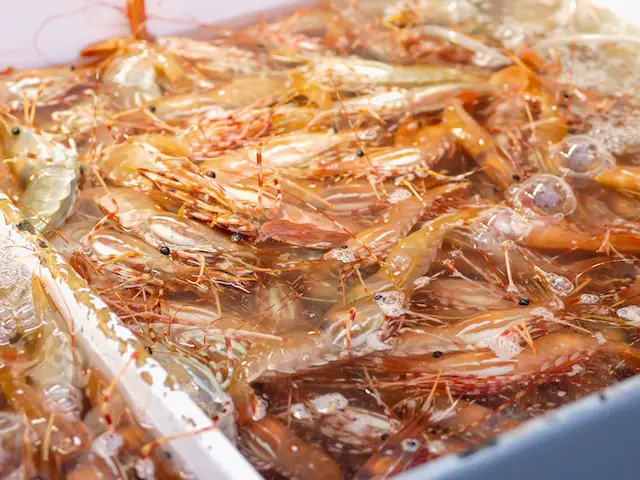Shrimp is a delicious and healthy protein that can be prepared in many ways. One popular method is boiling shrimp that has been previously frozen. But how long should you boil frozen shrimp to ensure it is cooked through without becoming rubbery? The answer is around 5 minutes.
When boiling shrimp straight from the freezer, there are a few simple steps to follow. Thawing first is ideal, but you can also boil frozen shrimp with a few tweaks to the method. In about 5 minutes in boiling water, the shrimp will turn opaque and become firm. Avoid overcooking, as extra time in the pot will toughen the shrimp.
With the right techniques, boiling frozen shrimp is an easy and foolproof cooking method. Read on to learn tips for buying, thawing, and boiling shrimp successfully.
Reasons to Boil Shrimp
Boiling shrimp is one of the easiest, fastest ways to cook this tasty seafood. Here are some of the top reasons why boiling shrimp is a great cooking method.
Boiling is one of the quickest and easiest ways to cook shrimp. Here are some of the benefits of boiling shrimp:
- It’s a very quick cooking method, taking only 2-5 minutes to fully cook frozen shrimp. This makes it ideal for weeknight meals when you need dinner on the table fast.
- Minimal preparation is required – you just need a pot of boiling water. There’s no need to prep a baking dish or pan. The stovetop and a pot are all you need for perfectly cooked shrimp.
- Boiling helps enhance the natural sweet flavor of shrimp. The hot water draws out the sweetness from the shellfish. Many people find boiled shrimp even sweeter tasting than grilled or sautéed.
- It’s a healthy cooking method with no added oils or fats. Boiling uses only water to cook the shrimp thoroughly. So you get all the protein of shrimp without any unnecessary calories or fat.
- The shrimp cook evenly throughout when boiled. There’s no risk of undercooked centers or charred exteriors as you might get from grilling. The rolling boil surrounds each shrimp to ensure even results.
- Boiled shrimp can be used hot in recipes, or chilled for shrimp cocktails or salads. The cooked shrimp is versatile for any recipe that calls for pre-cooked shrimp. It also holds up well when chilled, making it perfect for cold shrimp dishes.
Boiling really is one of the best all-around methods for cooking shrimp quickly and easily while still delivering excellent flavor, texture, and versatility. If you want an easy, healthy way to prepare shrimp, boiling is hard to beat.
What Type of Shrimp to Buy
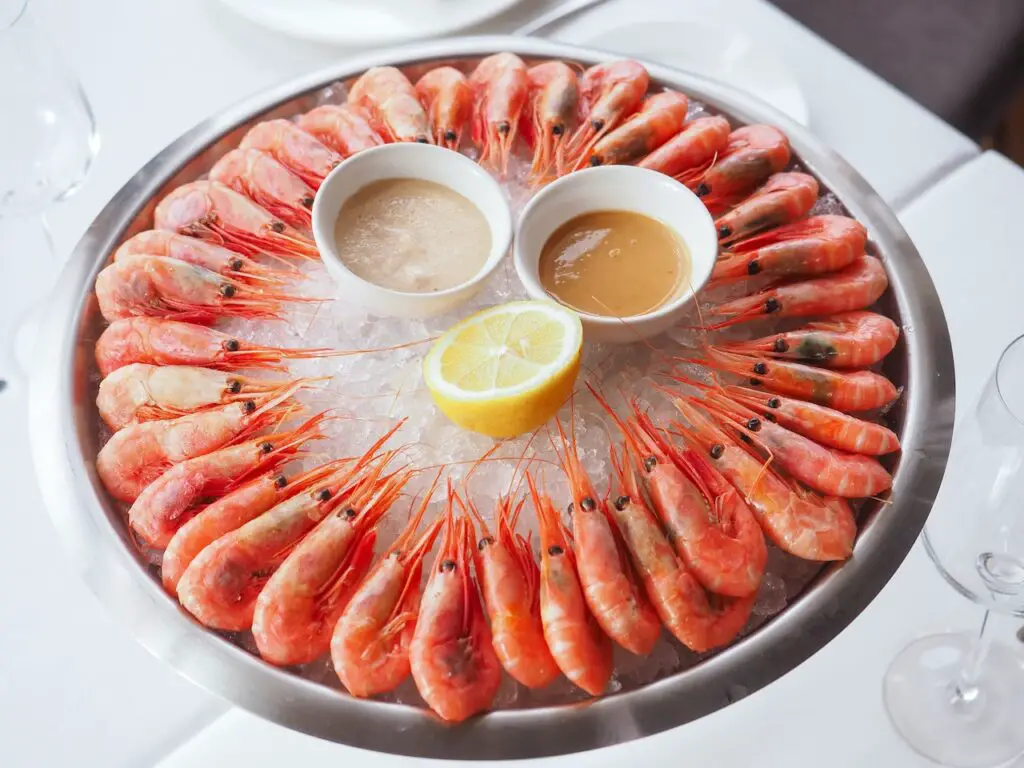
When it comes to boiled shrimp, selecting the right raw frozen shrimp is key. Here are some factors to consider when purchasing shrimp for boiling.
When buying shrimp to boil, opt for raw frozen shrimp. Look for shrimp sold in bulk bags or blocks in the freezer section. Some options include:
- Peeled and deveined – saves time as you won’t have to remove shells or veins. Deveining is the process of removing the digestive tract from the shrimp’s flesh.
- Tail-on or tail-off. Tail-on shrimp have a nicer presentation for dishes like shrimp cocktails. But they take longer to peel after cooking.
- Size grades like colossal, jumbo, large, or medium. Larger shrimp are often easier to peel and will cook more evenly. But smaller shrimp work well too.
- Uncooked with no seasoning or added ingredients. You want plain shrimp with no marinades, breading or sauce so you can season it yourself.
Wild-caught shrimp will have the best flavor, but farmed shrimp are more affordable. Go for large or jumbo shrimp for easier peeling after boiling. The best values are often bulk bags of frozen peeled and deveined tail-off shrimp.
When buying shrimp, you can choose between two main varieties – warm water or cold water. Warm water shrimp are typically farm-raised in places like the Gulf Coast. They have a milder flavor and are more budget-friendly. Cold-water shrimp are wild-caught in the oceans off New England or Canada. They have a sweeter, brinier flavor.
How to Buy Shrimp
When purchasing shrimp for boiling, be sure to check for freshness and quality. Follow these buying tips for the best results:
Follow these tips when purchasing shrimp for boiling:
- Check the expiration date and choose the packages furthest from the date. Shrimp can last up to a year frozen but it’s best to use within 3-6 months for optimal flavor and texture.
- Inspect the packaging for damage like tears or frost build-up. This could indicate it was thawed and refrozen which can deteriorate the quality.
- Avoid discolored or mushy shrimp. Shrimp should look firm and translucent through the packaging. Discoloration, opacity, or mushiness means the shrimp is old.
- Buy frozen shrimp in quantities you will use promptly. Don’t let it sit in your freezer for months. Try to plan meals to use up what you buy within a few weeks.
- Estimate 3-5 shrimp per serving to determine how much to purchase. Larger shrimp are on the lower end while smaller shrimp will be more pieces per serving.
- For easy peeling, buy shrimp with shells already removed. Unless you plan to use shells for stock, peeled shrimp will save lots of work.
How to Thaw Frozen Shrimp
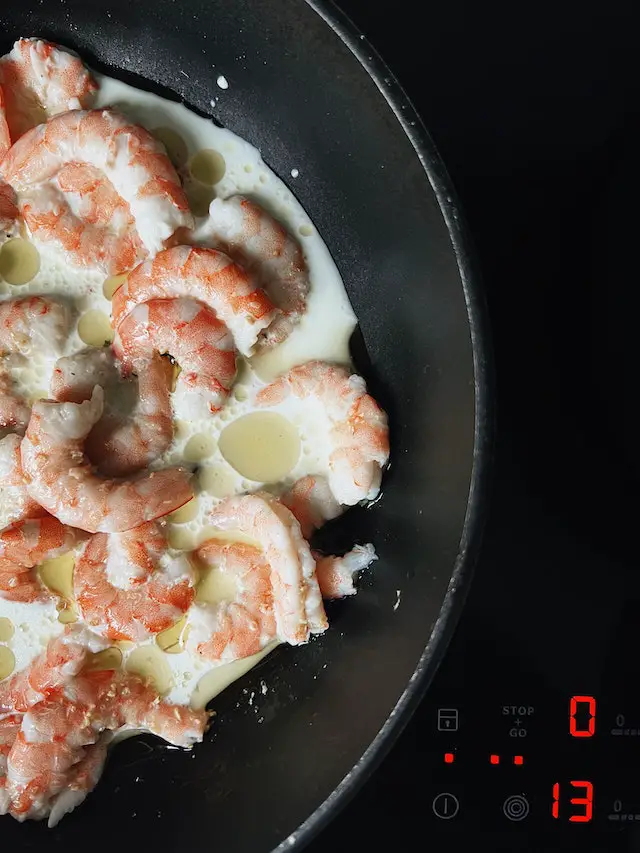
For evenly cooked boiled shrimp, properly thawing is a must. Here are some of the best methods to safely thaw frozen shrimp:
For best results, thaw frozen shrimp before boiling. Here are a few thawing methods:
- Refrigerator: Place frozen shrimp in a bowl and thaw overnight in the fridge. This slow thaw helps maintain quality.
- Cold Water: Submerge the bag of shrimp in cold water, changing the water every 30 mins. Takes about 1 hour. Helps speed thawing.
- Microwave: Microwave shrimp on defrost setting in 30-second increments, checking often. Quick but can cook unevenly.
Proper thawing is key for even cooking. Thawed shrimp will be flexible but still cold. Pat dry before boiling if thawed in water. If you’re in a rush, you can skip thawing and boil shrimp frozen. Just add 1-2 minutes to the boiling time.
Shrimp that isn’t fully thawed may cook unevenly. The exterior can overcook while the center is still frozen. Take the shrimp’s thickness into account and adjust the boiling time for extra large shrimp. Undercooked centers can harbor bacteria.
How to Boil Shrimp
Achieving tender, perfectly cooked shrimp by boiling is easy when you follow these steps:
Follow these steps for perfect boiled shrimp:
- Bring a large pot of salted water to a rapid boil. Use 1 tbsp salt per quart of water. The salt adds flavor and helps the shells separate from the shrimp.
- Add shrimp and stir. For frozen shrimp, let the water return to boil before starting the timer. Adding shrimp cools the water so it needs to re-boil.
- Boil large shrimp for 2-3 minutes, medium for 1-2 minutes. For frozen, add 1-2 minutes. Gauge doneness by opacity – shrimp should be firm and white/pink throughout.
- Check doneness by cutting into a shrimp. It should be firm and opaque throughout. A clear center means it’s still underdone. Remember shrimp will continue cooking a bit after removing from the heat.
- Drain shrimp in a colander and rinse with cold water to stop cooking. The cold water bath prevents overcooking.
- Peel shells (if needed) and devein shrimp. Rinse peeled shrimp to remove any shell fragments. Serve warm or chilled.
The key is to avoid overcooking which makes shrimp rubbery. Test doneness early and frequently. Shrimp cook very fast so watch the pot closely. Better to err on the underdone side.
What to Do with Boiled Shrimp
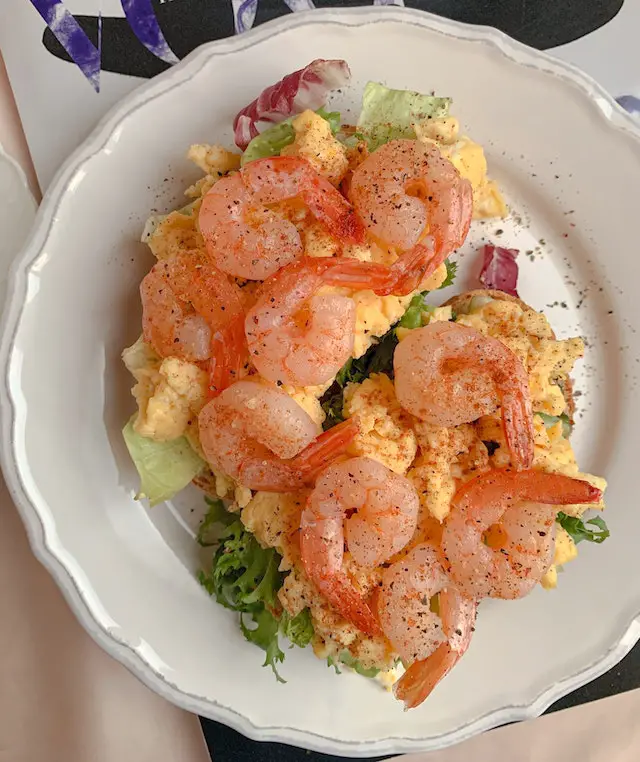
Boiled shrimp are extremely versatile. Here are some delicious ways to use up leftover boiled shrimp:
Boiled shrimp can be used in a variety of dishes:
- Shrimp Cocktail – Chill boiled shrimp and serve with cocktail sauce or remoulade sauce. Garnish with lemon wedges.
- Salads – Toss peeled boiled shrimp in pasta, potato, or greens salads. The pre-cooked shrimp needs only to be briefly chilled.
- Tacos – Top corn tortillas with shrimp, pico de gallo, avocado, and chipotle crema. Quick and easy taco night.
- Seafood Rolls – Wrap boiled shrimp in rice paper with cucumber, carrot, cilantro, and dipping sauce.
- Sandwiches – Serve shrimp on rolls or po’ boys with lettuce, tomato, and remoulade or tartar sauce.
- Shrimp Scampi – Sauté boiled shrimp with garlic, butter, lemon, and white wine. Serve over pasta or lemony orzo.
- Etouffee – Make a Cajun stew with shrimp, dark roux, veggies, and Cajun seasoning. Serve over rice.
Get creative with boiled shrimp in your favorite recipes like fried rice, pasta, stir-fries, soups, and more!
Boiled Shrimp Nutrition
Boiled shrimp packs a nutritional punch, as shown in this nutrition information:
| Nutrition Facts | Per 3 oz serving | % Daily Value |
|---|---|---|
| Calories | 90 | – |
| Protein | 20g | – |
| Fat | 1g | 2% |
| Sodium | 130mg | 6% |
| Selenium | 41μg | 75% |
| Iodine | 23μg | 15% |
| Vitamin B12 | 2μg | 80% |
| Phosphorus | 180mg | 15% |
Additionally, shrimp contains antioxidants like astaxanthin which become more absorbable through cooking. Studies show astaxanthin lowers blood pressure and heart disease risk.
So enjoy boiled shrimp guilt-free knowing it provides protein, vitamins, and minerals. Just watch sodium if limiting intake.
Boiled Shrimp vs. Raw Shrimp
While both are healthy, boiled shrimp has some advantages over raw. Here’s how they compare:
How does boiled shrimp compare to raw shrimp nutritionally?
- Raw and boiled shrimp have the same calorie and protein content. The major nutrients are not decreased by boiling.
- Boiling shrimp reduces the sodium content compared to raw. Some salt leaches out into the cooking water.
- Some water-soluble vitamins like vitamins B and C are decreased with boiling due to leaching.
- However, boiling increases the bioavailability of certain antioxidants like astaxanthin.
So while boiling results in lowered sodium and some vitamin loss, it also boosts the absorption of beneficial antioxidants. Plus, boiling makes shrimp safer to eat by killing bacteria like salmonella.
Overall, boiled and raw shrimp are quite similar nutritionally. But boiled shrimp are always the better choice from a food safety standpoint. And the marginal losses of some vitamins are offset by increased antioxidants.
Boiled Shrimp Recipes
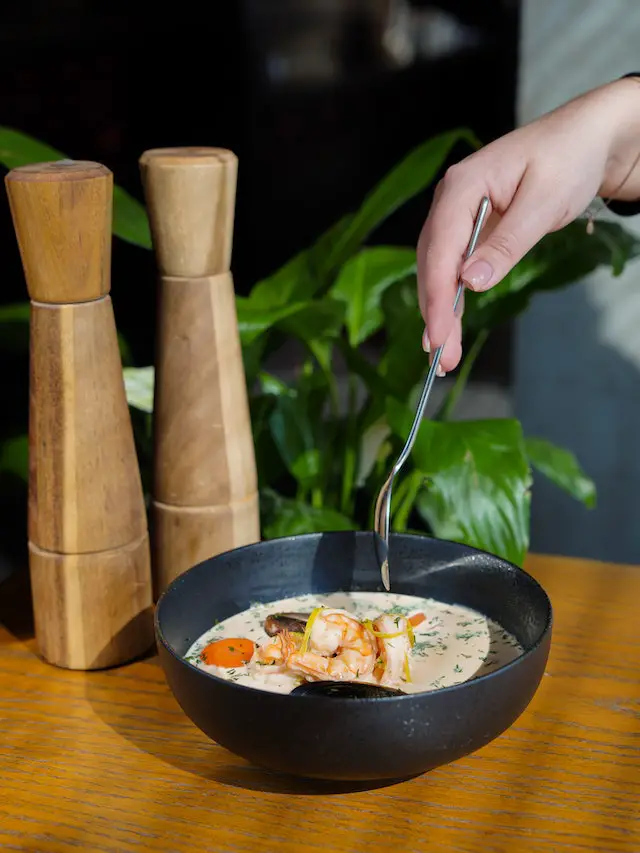
Boiled shrimp shines in these delicious recipes:
Cajun Shrimp Boil
Boil shrimp with sausage, corn, and potatoes seasoned with Old Bay and Cajun spices.
Coconut Curry Shrimp
Make a Thai red curry sauce with coconut milk and simmer the boiled shrimp in it.
Shrimp and Grits
Serve boiled shrimp over cheesy grits with bacon and scallions.
Shrimp Summer Rolls
Wrap boiled shrimp in rice paper with avocado, cucumber, and fresh herbs.
Shrimp Tacos
Top corn tortillas with boiled shrimp, cabbage slaw, avocado, and chipotle crema.
Conclusion
In summary, boiling shrimp is a quick, healthy way to cook shrimp that results in tender, flavorful seafood. Look for raw, peeled frozen shrimp and thaw properly before boiling for just 2-5 minutes. Use boiled shrimp in salads, tacos, curries, sandwiches, and more. Follow these guidelines for perfect boiled shrimp every time.

